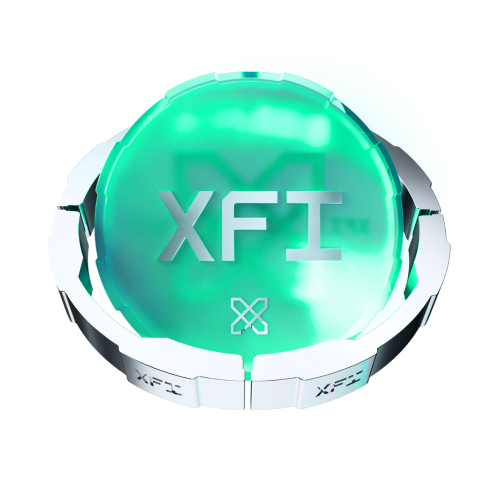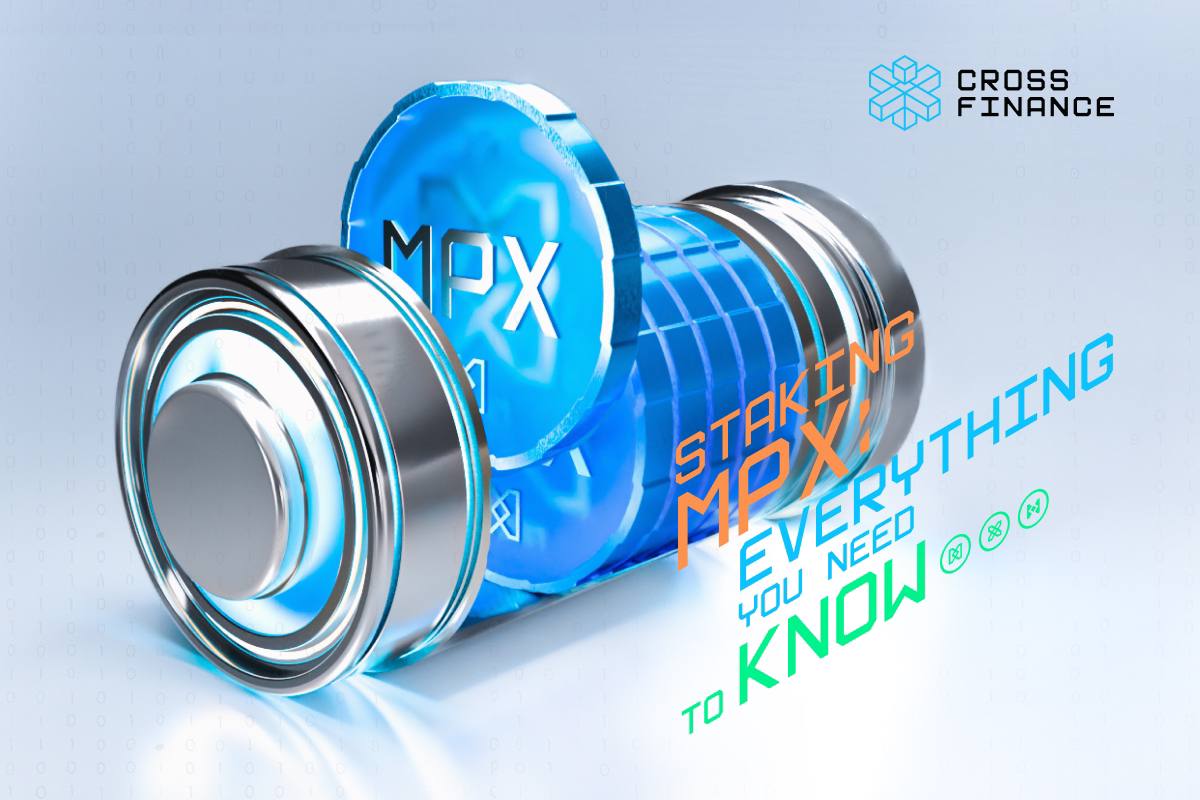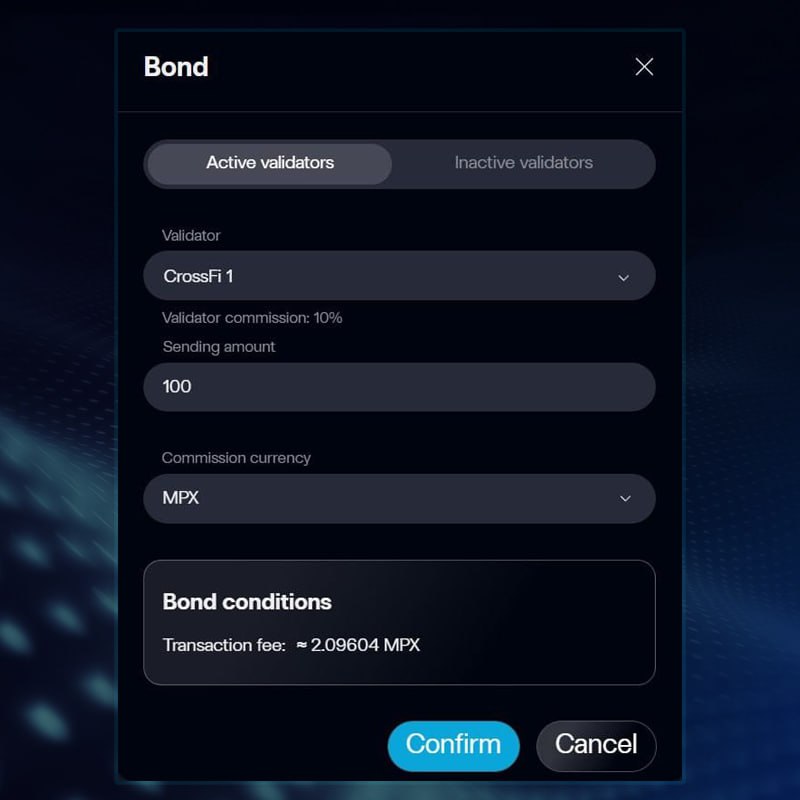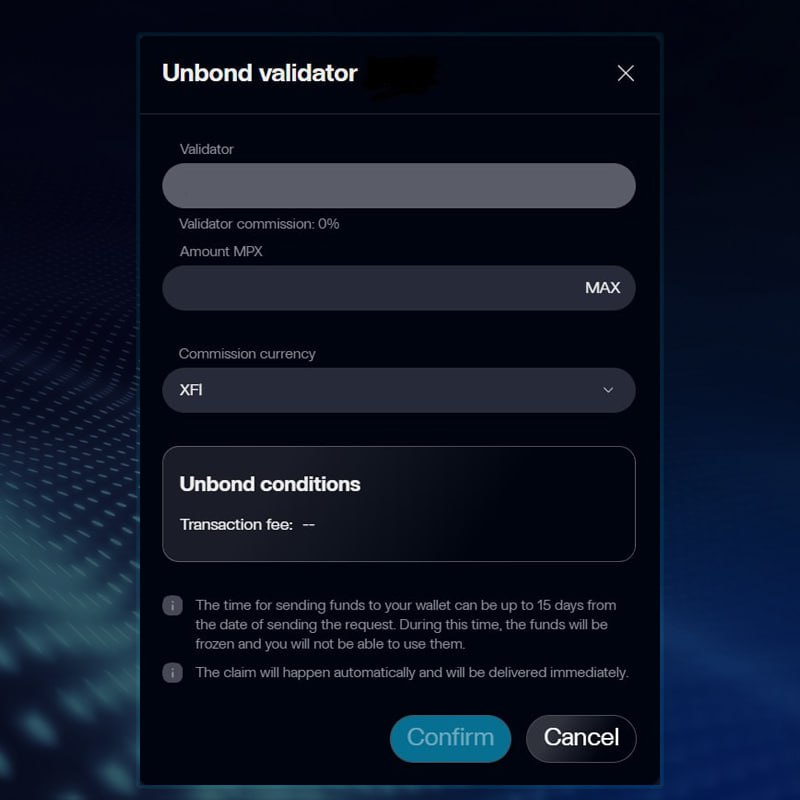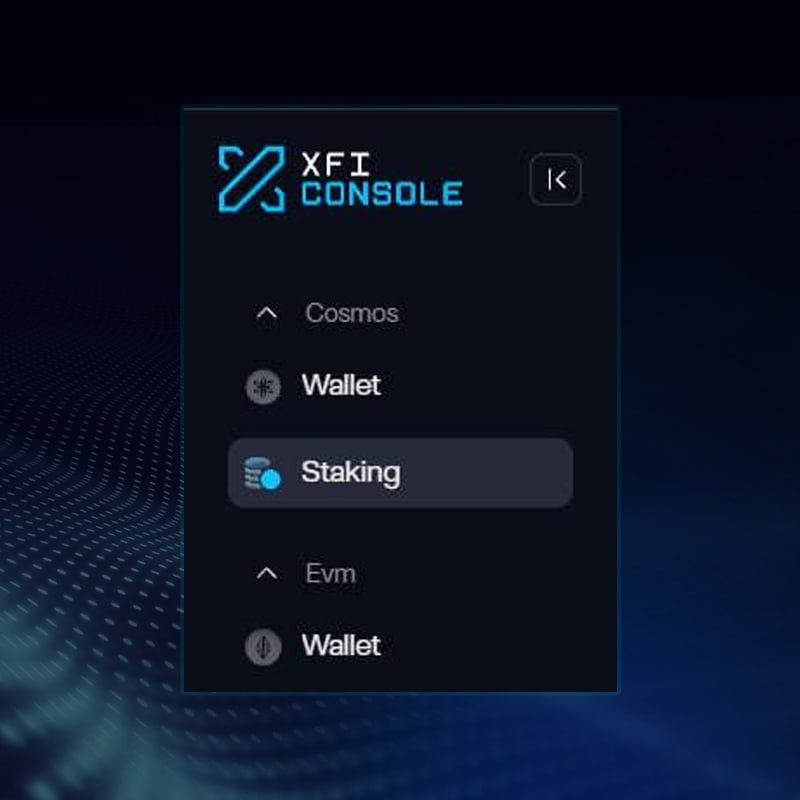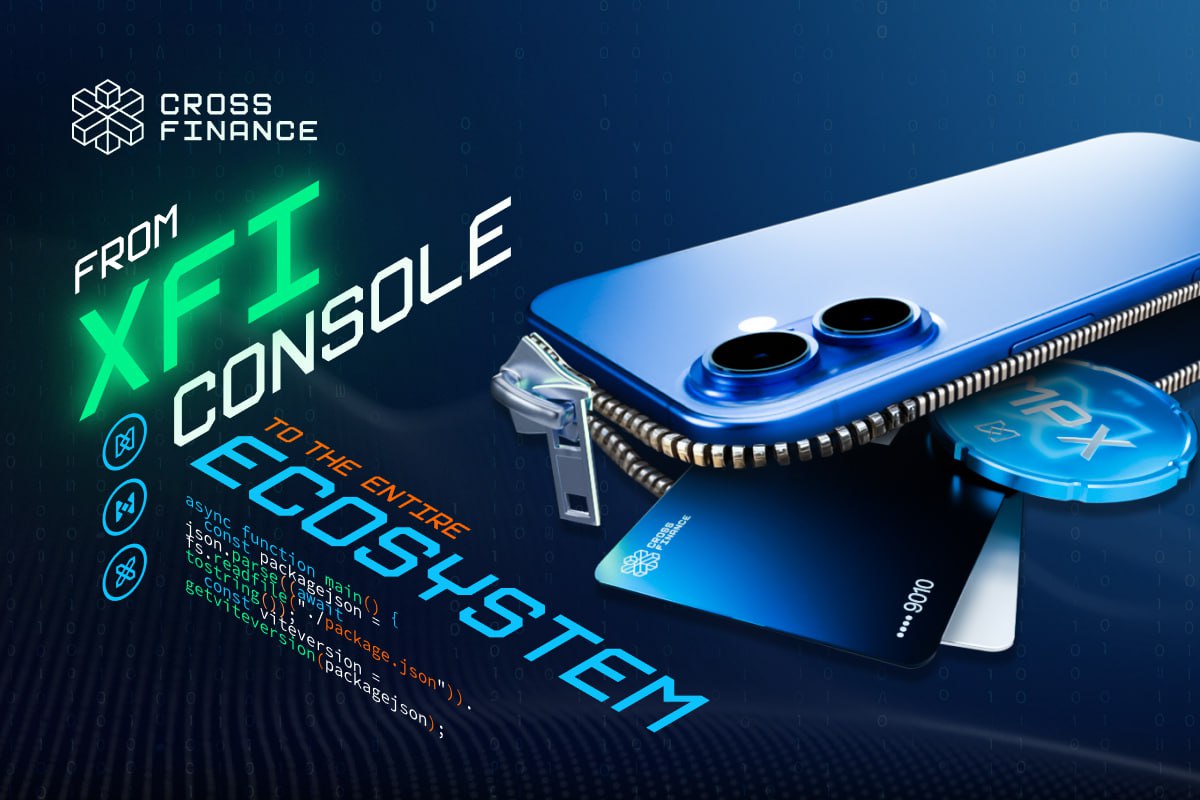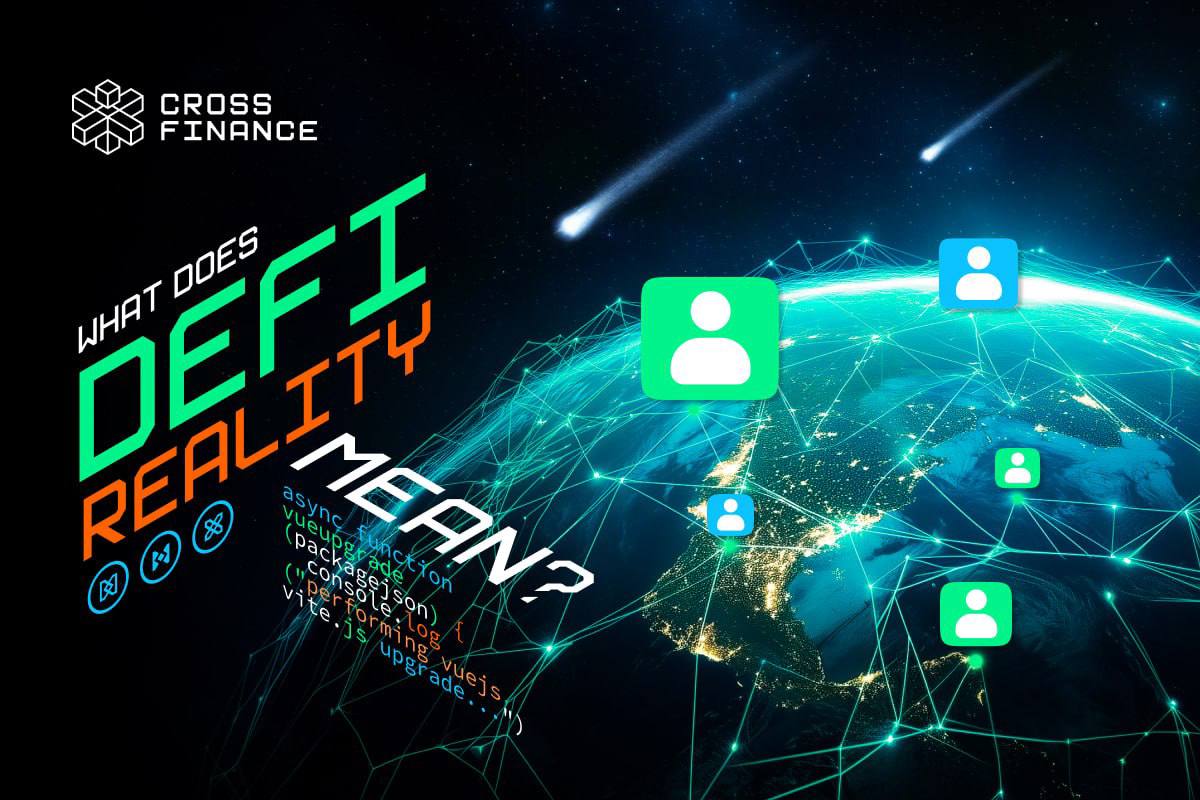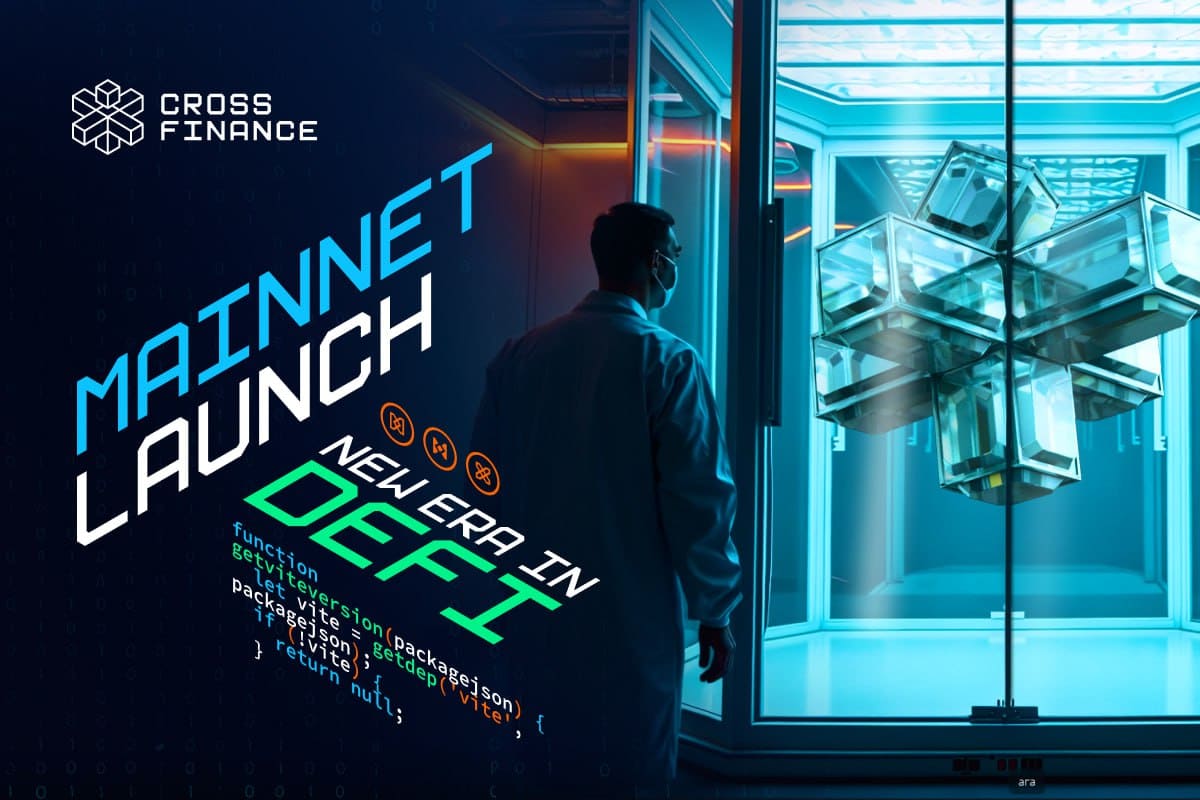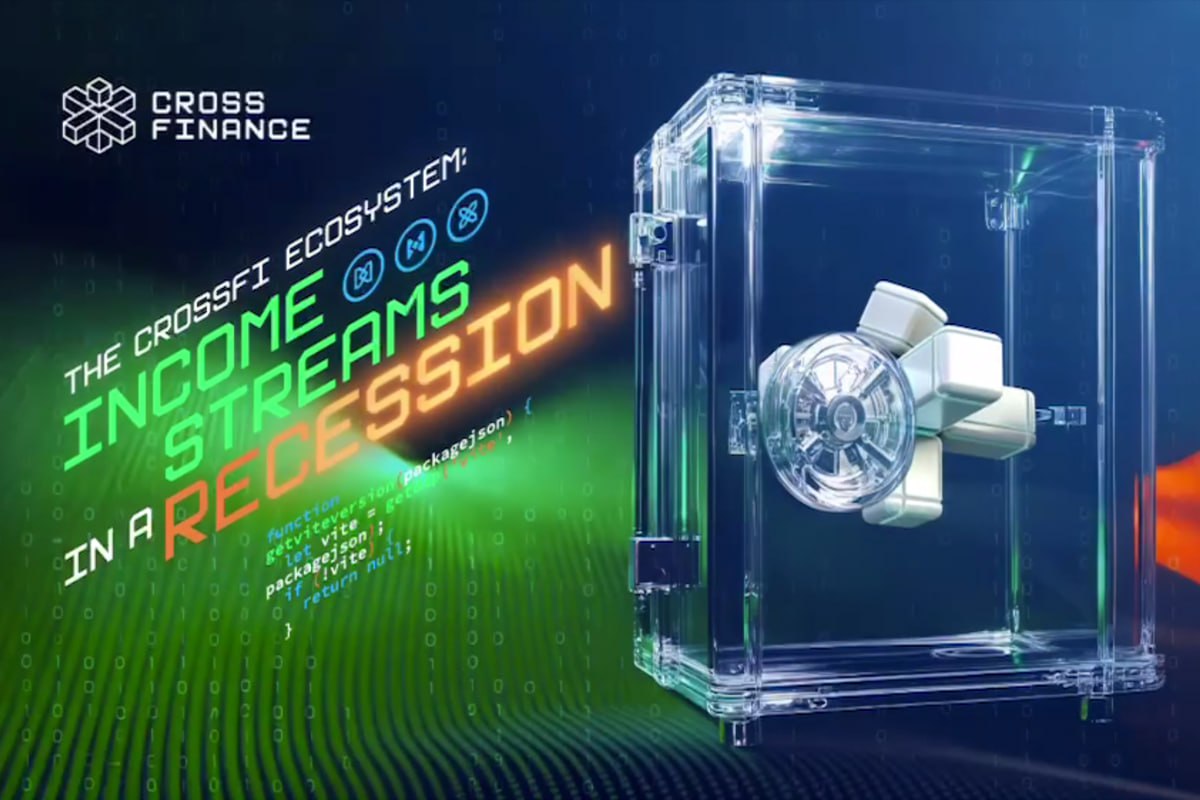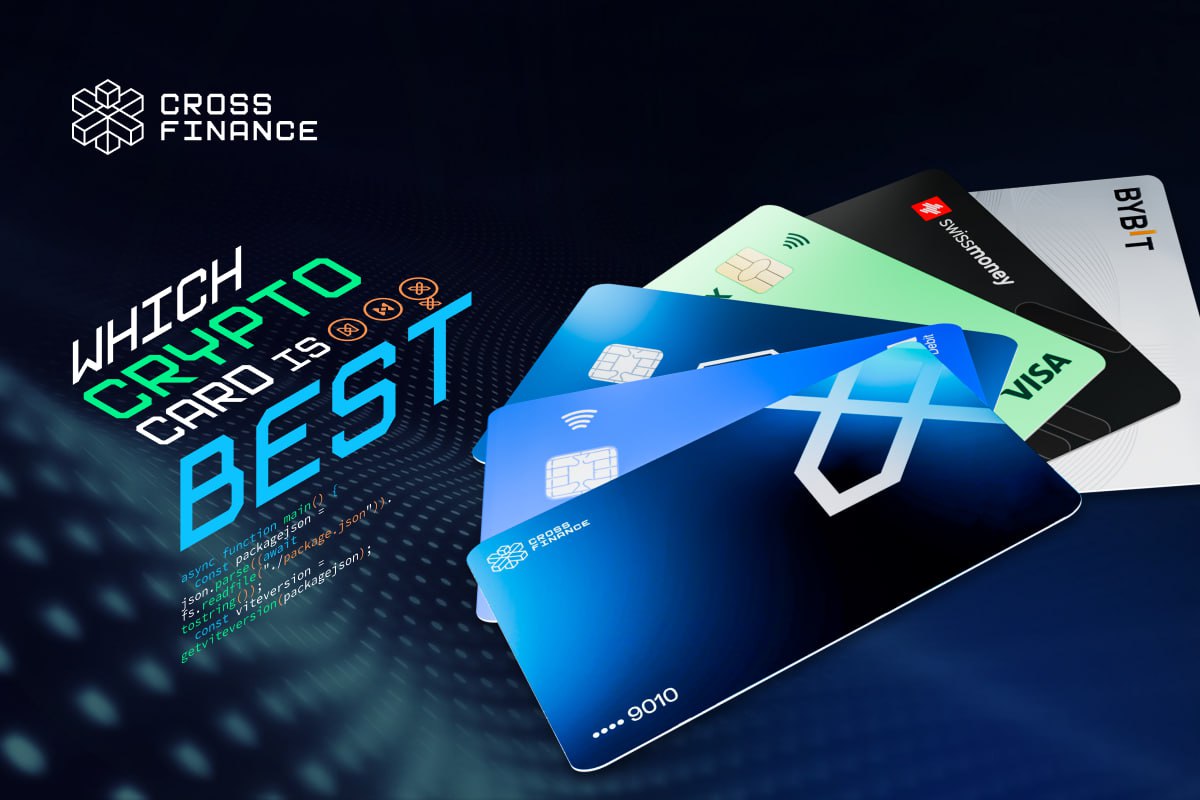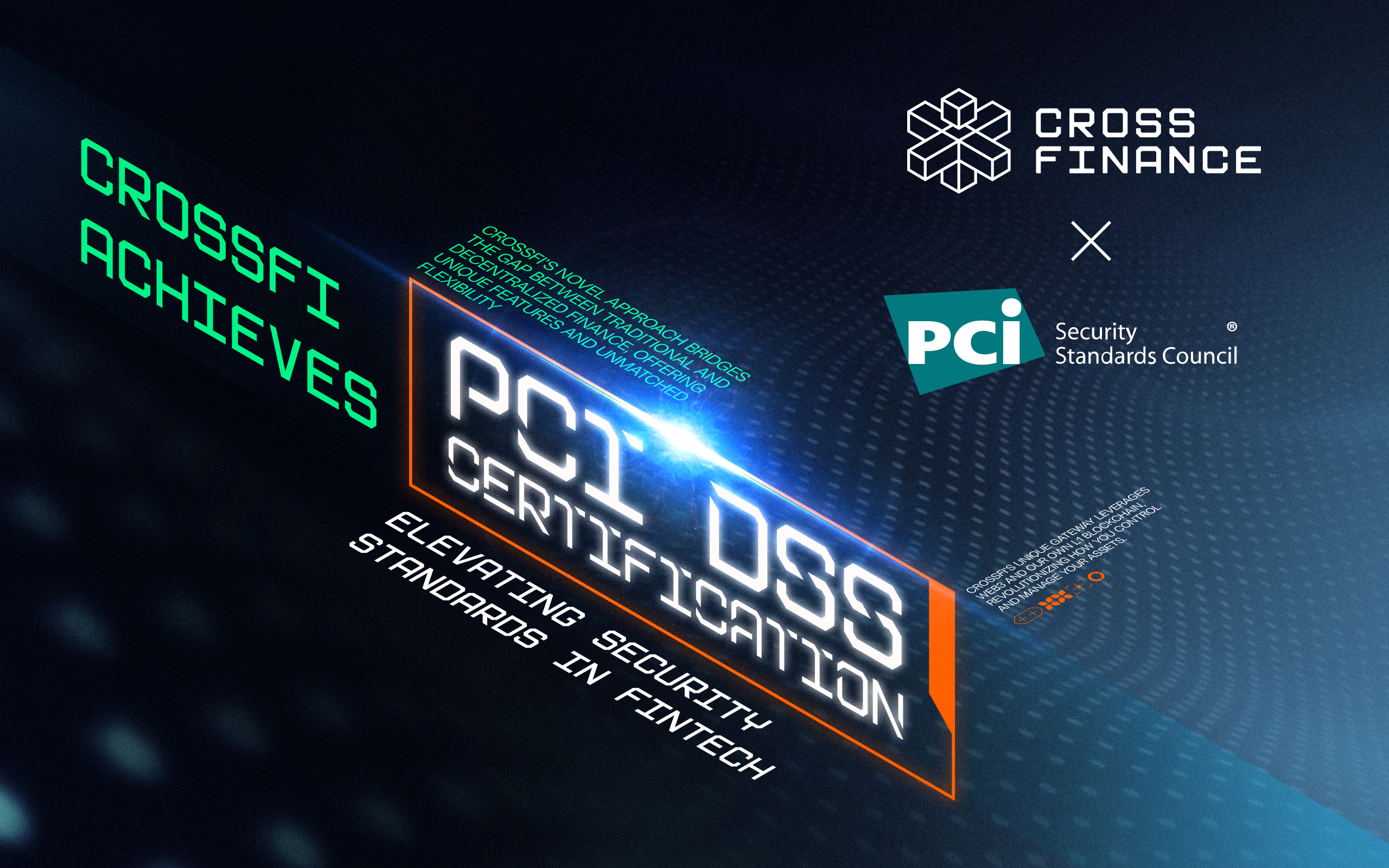This article will cover everything you need to know about staking MPX, including its benefits, risks, and how it works.
As the CrossFi ecosystem grows, many users are eager to learn how to earn rewards by staking their MPX coins. Staking is a key mechanism that allows users to contribute to the security of the blockchain and earn XFI rewards in return. Whether you’ve purchased MPX coins or received them through activities like grant programs or staking, offers an opportunity to generate passive income.
Main Takeaways
- Staking MPX involves locking your coins with a validator to support the blockchain’s functionality. In return, you earn XFI rewards for the next 18 years
- Users can stake MPX via the CrossFi Console by selecting a validator, reviewing the commission and transaction fees, and delegating their coins.
- Rebonding and unbonding are two important processes for switching validators or withdrawing your stake.
- APR (Annual Percentage Rate) is the key indicator of staking rewards, dynamically influenced by the market value of XFI and the total staked MPX.
- Validators play a critical role in staking, and users must carefully choose them based on self-delegation, commission rates, track record, and community contributions.
- Slashing risk: If a validator is penalized, a small percentage of your stake may be lost, so selecting validators wisely is important.
What is Staking Crypto?
Staking in the context of cryptocurrencies refers to locking up your crypto assets to support the blockchain’s operations, such as validating transactions. With proof of stake (PoS) blockchains like CrossFi, staking MPX coins allows the network to remain decentralized, secure, and operational. Validators, the entities responsible for maintaining the network, require delegated stakes from users to increase their voting power and validate more transactions.
When you stake your MPX coins, you essentially participate in the blockchain’s governance and security. In return, you earn XFI rewards, which accumulate over time and can be claimed at your convenience. The staking process is simple and can be done through the CrossFi Console.
What is Rebond?
Rebonding allows users to switch their delegated stake from one validator to another instantly and for a small transaction fee (around 3 MPX). The total delegation amount must be moved entirely, as partial rebonding is impossible. This is useful if your validator experiences performance issues or if you want to support a different validator with a better track record or lower fees.
What is Unbond?
Unbonding is the process of withdrawing your staked MPX coins from a validator. Once initiated, the process can take up to 15 days to complete, during which your funds are frozen. After this period, your staked coins are returned to your wallet, and any unclaimed XFI rewards are automatically transferred. A standard transaction fee of around 3 MPX applies to this process.
Proof of Stake Validation
In a proof of stake (PoS) system, validators are chosen to verify transactions and create new blocks based on the amount of cryptocurrency they have staked. This consensus mechanism is more energy-efficient than proof of work (PoW), making it an appealing option for many modern blockchains.
By staking MPX, users contribute to the validator’s voting power, influencing their ability to participate in the network’s consensus process. Validators are rewarded in XFI for successfully validating transactions, and these rewards are distributed to delegators based on their stake.
How Does Crypto Staking Work?
Crypto staking is a process where users lock up their cryptocurrency assets to participate in the maintenance and security of a blockchain network. In return for their contribution, stakers earn rewards, often using the network’s native token. In proof-of-stake (PoS) networks like CrossFi, staking plays a crucial role in the network’s governance and transaction validation.
When you stake your assets, such as MPX, in the CrossFi ecosystem, you delegate your coins to a validator. Validators are responsible for verifying transactions, producing new blocks, and ensuring the overall security and functionality of the blockchain. By delegating your MPX coins to a validator, you help them increase their voting power and validation capabilities, thus supporting the network’s decentralized governance system. In return for this contribution, you receive XFI rewards proportional to the amount of MPX staked and the validator’s performance.
Here’s a breakdown of how the crypto staking process works:
1.Selecting a Validator
In most PoS networks, including CrossFi, you don’t need to run your own node to stake your coins. Instead, you can delegate your assets to an existing validator with the infrastructure to participate in the network. This delegation of voting power does not transfer ownership of your coins to the validator, but it does allow them to use your stake to validate transactions and secure the blockchain.
To stake your MPX, choose a validator through the CrossFi Console. Validators vary in commission rates, performance history, and community contributions, so selecting one that aligns with your goals is important. Validators with higher uptime and a lower commission rate are generally more favorable as they maximize your rewards. You can check validators’ uptime, total stake, and other stats on XFI Scan: https://xfiscan.com/validators
2.Delegation and Locking Assets
Once you select a validator, you delegate your MPX coins by locking them in the staking contract. Your assets will be unavailable for trading or transfers during the staking period. The locking period varies across blockchain networks, but the principle remains the same: your coins are held as collateral while the validator uses their voting power to validate transactions.
This locking mechanism provides security to the network by ensuring that validators and delegators are committed to maintaining the integrity of the blockchain. Suppose a validator misbehaves or attempts to attack the network. In that case, they can be penalized through slashing, which deducts a small portion of staked coins from both the validator and their delegators. Therefore, choosing a trustworthy validator is essential.
3.Earning Staking Rewards
The primary motivation for staking is the staking rewards. In the CrossFi network, these rewards are distributed in XFI, the native token, and are earned based on several factors:
- Amount Staked: The more MPX you stake, the higher your potential rewards.
- Validator’s Performance: Validators with higher uptime and efficiency tend to generate more rewards for their delegators.
- Total Network Stake: As the total amount of MPX staked in the network changes, the reward rate can fluctuate. When fewer coins are staked, the rewards per coin tend to be higher, and vice versa.
- Network Conditions: The market price of XFI and overall blockchain activity can also influence the rewards rate.
Rewards are distributed after each block is validated and can be claimed by the delegator at any time. A small transaction fee may sometimes be required to move the rewards to your wallet.
4.Transaction Fees and Validator Commissions
When staking your MPX coins, you’ll encounter two types of fees:
- Transaction Fees: A small fee is required whenever you stake, claim rewards, rebond, or unbond your MPX. These fees are standard in most blockchain networks to cover the cost of processing your transactions on the network.
- Validator Commissions: Validators typically charge a commission on the rewards they generate before distributing them to their delegators. This commission is a percentage of the total rewards and is set by each validator. When choosing a validator, it’s important to consider the commission rate, as higher commissions will reduce your net rewards.
5.APR: Annual Percentage Rate
APR is a key metric in staking that reflects the potential return on your staked assets over a year. The APR is calculated based on several factors, including the total amount of MPX staked, the market price of XFI, and the rewards emitted by the network.
The APR is not fixed and can fluctuate over time due to changes in:
- Market Conditions: The value of XFI and MPX in the open market will affect your staking rewards.
- Total Stake: If more MPX is staked across the network, the APR may decrease since the rewards pool is distributed among more stakers.
- Emission Schedule: Some networks have a fixed supply of staking rewards that decrease over time, affecting the APR.
For example, if the APR for staking MPX is 25%, staking $100,000 in MPX = 5,000,000 MPX (1 MPX = 0.02 USD) will produce 25% of yield which is $25,000 or in XFI approximately 30,000 XFI (today 1XFI = 0.83 USD). However, tracking the APR regularly is important, as it can shift based on the network’s dynamics.
Crypto staking effectively earns passive income while supporting the blockchain network’s security and operations. Users can make informed decisions to maximize their returns while contributing to the blockchain’s decentralization by understanding the mechanics of staking, including rewards, fees, and the APR.
Why Stake MPX Over Any Other Crypto?
Staking MPX offers several advantages over other cryptocurrencies. First, the CrossFi network’s growth and active participation ensure a healthy staking ecosystem with consistent rewards. Additionally, MPX staking offers:
- Stable returns: Staking MPX has a dynamic APR that adjusts based on market conditions and network participation, ensuring fair returns.
- Community-driven validators: Many actively contribute to the CrossFi community, offering additional value beyond financial returns.
You can get MPX using these links:
Get MPX: https://getmpx.crossfi.org/
More About MPX: https://crossfi.org/mpx/
How to Choose a Validator?
Choosing the right validator is crucial for maximizing your staking rewards and minimizing risks. Here are key factors to consider:
- Amount of self-delegated MPX: Validators who stake a significant portion of their coins are committed to their role.
- Amount of delegated MPX: Validators with higher total stakes often have more trust within the community.
- Commission rate: Validators take a commission from the rewards before distributing them, so choose one with a fair rate.
- Track record: Review a validator’s performance history, including uptime and participation in governance.
- Community contributions: Validators who contribute to the community by creating educational content or participating in development efforts are often more reliable.
Crypto Staking Calculator
A crypto staking calculator can be used to estimate your potential staking rewards. These calculators help you determine the return on your staked MPX based on factors like:
- APR: The current Annual Percentage Rate.
- Stake amount: The number of MPX you plan to stake.
- Investment period: The length of time you plan to stake your coins.
You can track real-time APR and other staking metrics on tools like XFI Scan.
What Should You Do If the XFI Rewards Are Not Generated?
If you notice that your XFI rewards are not being generated, it’s possible that your validator has gone offline or is experiencing technical difficulties. In this case, you have a few options:
- Make sure that validator is in the active validator list.
- Wait: The validator may return online and continue generating rewards.
- Rebond: Switch your stake to another validator.
- Unbond: Withdraw your stake and choose another validator later.
Can a Validator Run Away With Their Delegators’ MPX?
No, validators do not have custody of their delegators’ MPX coins. When you delegate your coins, you simply assign voting power to the validator. However, delegators can experience a slashing event if their validator misbehaves or fails to meet the network’s standards, resulting in a small loss of staked coins. This is why choosing a reliable validator is important.
Conclusion
Staking MPX provides a straightforward and effective way to earn rewards while supporting the CrossFi blockchain. By carefully selecting a validator, understanding the rebonding and unbonding processes, and monitoring your rewards, you can maximize your earnings and contribute to the network’s security. As with any investment, staking carries some risks, but with due diligence, it can be a reliable source of passive income.
FAQ
Q1. What is staking crypto, and how does it work?
A: Staking crypto refers to the process of validating blockchain transactions by locking up your crypto assets in a proof-of-stake (PoS) network. In a PoS system like the one used by CrossFi, validators are selected based on the amount of cryptocurrency they have staked. These validators then process and validate transactions on the blockchain.
When you stake your coins, you’re helping to secure the network, and in return, you receive rewards in the form of the network’s native tokens—such as XFI in the case of staking MPX. The rewards are usually distributed periodically, and the amount you earn depends on factors such as the total number of staked tokens, the validator’s performance, and the current APR for staking.
Staking is a popular alternative to mining, which relies on proof of work (PoW) and is more resource-intensive. Many blockchain networks now use PoS due to its energy efficiency and benefits from decentralization.
Q2. What are the benefits and risks of staking crypto?
A: Staking crypto offers several benefits, but it also comes with risks that should be considered before participating.
Benefits:
- Passive Income: Staking allows you to earn rewards (such as XFI) without trading or actively managing your crypto assets. These rewards can be substantial depending on the staking platform and the APR.
- Network Participation: Staking contributes to the decentralization and security of the blockchain network. By staking, you are helping the network operate efficiently without the need for energy-consuming mining activities.
- Low Entry Barrier: Unlike mining, which requires specialized hardware and high electricity costs, staking only requires holding and delegating your crypto assets to a validator.
- Stable Rewards: Depending on the network and APR, staking can provide predictable rewards, allowing you to plan your earnings.
Risks:
- Slashing: In some PoS networks, validators can be penalized for malicious or negligent behavior, resulting in a small percentage of staked assets being “slashed” or forfeited. While this rarely happens, it’s a risk to be aware of when choosing a validator.
- Locked Funds: When you stake your assets, they are typically locked up for a set period, meaning you cannot access or trade them. Unbonding (withdrawing) staked coins may also take several days to process.
- Price Volatility: Staking rewards are often paid in the network’s native token, which means their value can fluctuate based on market conditions. If the token’s price drops, your rewards may be worth less than anticipated.
Q3. How do I choose the best validator for staking crypto?
A: Choosing a validator is essential in staking and can significantly impact your rewards and security. Here are the key factors to consider when selecting a validator:
- Amount of Self-Delegated Coins: Validators with more self-delegated crypto show that they invest their funds in the network, sharing the risks with their delegators.
- Total Delegated Coins: A high number of delegated coins can indicate trust from the community, but be cautious of validators with too much power, as this can reduce the network’s decentralization.
- Commission Rate: Validators take a commission from the staking rewards before distributing them to their delegators. Look for a validator with a reasonable commission rate to maximize your returns.
- Track Record: A validator’s historical performance, including uptime and participation in network governance, can give you insights into their reliability.
- Community Contributions: Some validators contribute to the blockchain community through educational content, open-source projects, or community engagement. Supporting these validators can further benefit the network.
Q4. What is proof of stake, and how is it different from proof of work?
A: Proof of Stake (PoS) is a consensus mechanism blockchain networks use to validate transactions and create new blocks. In PoS, validators are chosen based on the amount of cryptocurrency they have staked, meaning they lock up their coins to help secure the network. In return, validators and those who delegate to them earn staking rewards.
Proof of Stake differs from Proof of Work (PoW), the mechanism used by older blockchains like Bitcoin, which requires participants (miners) to solve complex cryptographic puzzles using vast amounts of computational power. PoS is considered more energy-efficient, scalable, and decentralized, as it doesn’t require expensive mining equipment or massive energy consumption to maintain the network.
Q5. Is staking crypto worth it?
A: Whether staking crypto is worth it depends on several factors, including the APR, the specific coin you are staking, the platform’s fees, and your risk tolerance. For many users, staking provides a steady stream of passive income, especially in networks that offer high crypto staking rewards and low commission rates.
Staking can also benefit long-term holders of cryptocurrencies who want to earn additional rewards on their assets without selling them. However, the value of staking rewards can fluctuate based on the price volatility of the staked coin, so it’s essential to consider market conditions before staking.
Q6. How do I calculate my staking rewards?
A: You can use a crypto staking calculator to estimate your potential rewards. These calculators consider the amount of crypto you plan to stake, the Annual Percentage Rate (APR), and the duration of your staking period to estimate your returns.
For example, if you stake MPX and the APR is 25%, staking 10,000 MPX for one year would yield approximately 2,500 XFI in rewards, assuming the APR and market conditions remain stable. Remember that the APR is dynamic and can change based on several factors, including the total number of coins staked in the network and the token’s market price.
Q7. Is staking crypto safe?
A: Staking crypto is generally considered safe, but there are risks. One of the primary risks is the slashing of funds, which occurs when a validator is penalized for malicious behavior or poor performance. A small portion of the staked coins can be lost when this happens.
However, the slashing risk is relatively low if you carefully select a reliable validator with a good track record. Additionally, your staked assets remain under control—you are not handing over ownership to the validator. Validators cannot run away with your coins, but poor validator performance can impact your staking rewards.
Q8. What are the best crypto staking platforms?
A: The best crypto staking platforms offer low fees, reliable validators, and high staking rewards. Some popular platforms for staking include:
- CrossFi: For staking MPX and earning XFI rewards with easy-to-use interfaces and transparent validators.
- Binance Staking: A popular centralized exchange offering staking for various coins.
- Kraken: Offers staking for multiple cryptocurrencies with competitive rewards.
- Coinbase: A beginner-friendly platform offering staking for select assets.
Research each platform’s fees, supported coins, and staking conditions before committing your assets.
Q9. What are the pros and cons of staking crypto?
A:
Pros:
- Passive Income: Earn rewards on your crypto assets without active management.
- Supports the Network: Contribute to blockchain decentralization and security.
- Low Barrier to Entry: No expensive hardware or high energy consumption is required.
Cons:
- Locked Funds: Staked assets are usually locked for a specific period, limiting liquidity.
- Slashing Risk: Validators can be penalized for poor performance, resulting in a small loss of staked funds.
- Price Volatility: The value of staking rewards can fluctuate based on market conditions.
Q10. What is the highest staking crypto?
A: The highest staking rewards can vary depending on the blockchain, APR, and market conditions. Platforms like CrossFi, Cosmos, and Solana often offer competitive staking rewards, but these rates fluctuate. Always check the current APR and other conditions before staking your assets.
 GET MPX
GET XFI
GET MPX
GET XFI
 CrossFi Chain
CrossFi Chain
 Cosmos
Cosmos
 EVM
EVM

 CrossFi Foundation
CrossFi Foundation
 Users
Users
 Creators
Creators
 CrossFi Evolution Hackathon
CrossFi Evolution Hackathon
 Developers
Developers
 Validators
Validators



